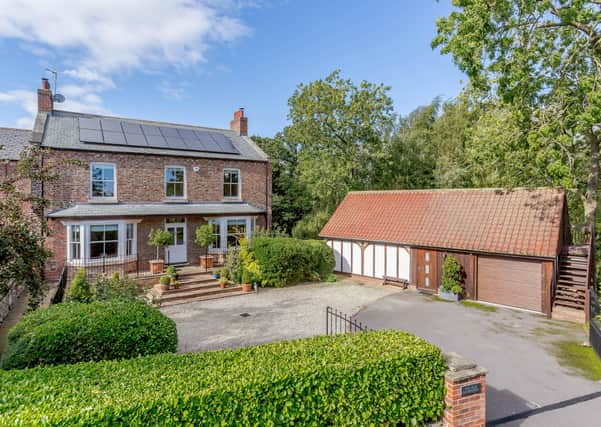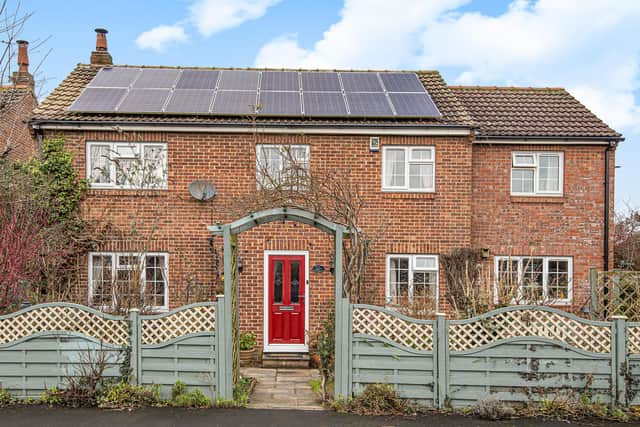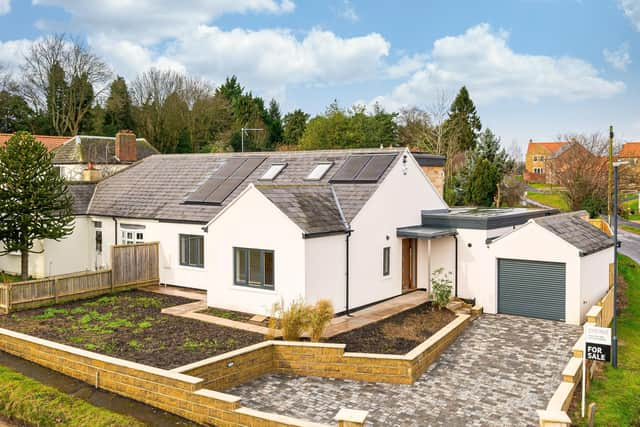How to beat rising energy prices - with a home that doubles as mini green power station


All of the so-called Big Six energy suppliers introduced price rises on April 1, which translated to an average £96 annual increase per household – and the trend is likely to continue.
By contrast, people who can generate their own energy save money on their bills, but if they produce enough juice, they can also make money by selling surplus electricity to the National Grid.
Advertisement
Hide AdAdvertisement
Hide AdThis used to be done via the feed-in tariff (FIT) system, but is now covered by the smart export guarantee (SEG). This is not as generous as the old scheme, but any “loss” is partially offset by lower prices for solar panels, which can be around 80 per cent cheaper than they were a decade ago.


A fair rate for power sold back to the grid is about 5-6p per kWh, according to the Solar Trade Association, and the Energy Saving Trust estimates that a typical four-kWp system can cut between £90 a year and £240 a year off your bill (kWp stands for kilowatt peak – how the power produced by panels is measured). Homes in our region are likely to fall within the mid-range of estimates, somewhere between darker Scotland and the sunny South East.
A typical solar panel system costs about £4,800, and in the North of England is likely to take about 20 years to recoup the investment. But then, you can also spend those two decades content in the knowledge that you’re helping to meet the nation’s energy needs sustainably.
Of course, you can avoid altogether the hassle of researching the market and installing solar panels yourself, through the simple expedient of buying a house that already has them.
Advertisement
Hide AdAdvertisement
Hide AdThere are several currently on the market in our area, and the following are three of the very best.


With four floors and about 3,900 sq ft of living space, the Old Farmhouse, at Wormald Green between Harrogate and Ripon, is roomy to say the least. It has six bedrooms, six bathrooms, entrance hall, four reception rooms, kitchen, utility room and even a gym in the basement.
Outside, there’s off-street parking, garage with a large room above, plus annexe/home office, barn suitable for a variety of uses, and 1.33 acres of paddock and gardens, including an orchard and gravelled terraces overlooking Markington Beck.
On the other side of the A61 Harrogate-Ripon road, Crossways is a one-off architect-designed home at Bishop Monkton with 2,400 square feet of accommodation. It has four bedrooms – two of them on the ground floor – three bathrooms, family room, utility room, integral garage, and large, open-plan living kitchen, which opens out onto the gardens. Those solar panels also come with tax-free annual FIT payment, reducing energy bills.
Advertisement
Hide AdAdvertisement
Hide AdFinally, 135 Prince Rupert Drive is a detached house on a corner plot on the edge of Tockwith, near Wetherby. Its 1,500 sq ft of living space incorporate four bedrooms, two bathrooms, entrance hall, two reception rooms, and kitchen, which opens onto the gardens, where there’s a shed, summerhouse and garage.